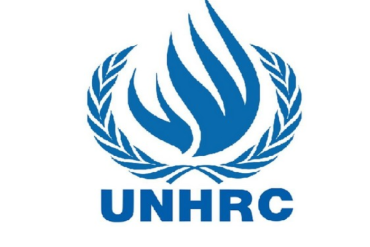This is cross posted by A. Jay Adler at The Sad Red Earth (Adler also blogs at Times of Israel, where this essay first appeared.)
 We have it from Aesop that “a doubtful friend is worse than a certain enemy. Let a man be one thing or the other, and we then know how to meet him.” Let there be no doubt, then, for Israel, and for those who would, in whatever words, pretend to be its friends.
We have it from Aesop that “a doubtful friend is worse than a certain enemy. Let a man be one thing or the other, and we then know how to meet him.” Let there be no doubt, then, for Israel, and for those who would, in whatever words, pretend to be its friends.
In On War, a different kind of sage, Carl von Clausewitz, famously wrote that “War is not a mere act of policy but a true political instrument, a continuation of political activity by other means.”
However, Clausewitz also said, “The aim of war should be the defeat of the enemy. But what constitutes defeat? The conquest of his whole territory is not always necessary, and total occupation of his territory may not be enough.”
Israel has always militarily defeated its enemies, but that has meant neither an end to all conflict with these enemies nor a cessation of the challenges to Israel’s existence. Total occupation of the enemy’s territory has not been enough for Israel – a state of affairs from which it has already receded – and defeat without the military conquest of territory is what Israel’s enemies pursue. Guerilla wars and insurgencies pursue such victory, too. In today’s media world, an almost totally mediated political reality, those who oppose the existence of Israel believe they can destroy the nation through a campaign of negative commentary, cultural assault, symbolic misrepresentation, and tactical military loss that will direct the political responses of other nations. The Israeli historical narrative is daily being ideologically reconstructed by committed enemies for whom the activating belief is that delegitimization begins in the mind.
“When we speak of destroying the enemy’s forces,” said Clausewitz, “we must emphasize that nothing obliges us to limit this idea to physical forces: the moral element must also be considered.”
This, to invert Clausewitz, means politics as a continuation of war by other means.
But what is the nature of Israel’s enemies? Here we find a highly unusual phenomenon.
An observable truth of conflict between peoples is that the contending parties will hold to genuinely differing – which is not to say equally true – perceptions of the grounds of their conflict and that most members of warring groups will demand, up until some point of human and political exhaustion has been reached (or an outcome of total victory and defeat, as in the Second World War or the case of the Tamil Tigers), that the conflict be maintained until the ascendancy of their claims has been achieved. This is to say that Palestinians and Israelis are, in a sense, supposed to be, in the very nature of any uprising in conflict between two groups, angry and unyielding with each other – until the point of some hoped for compromise. That such point of exhaustion might seem rationally to have been reached long and many times ago in this conflict, and thus the moment of compromise have arrived, and that neither has, in fact, come to pass is an entirely different subject of consideration. What I describe is the normal and not very remarkably observed general case.
What of outside parties? Outside parties will commonly remain uninvested in a conflict – even, for so many reasons, when there may be a fair consensus of belief that one party is in the wrong and insupportably belligerent. They are rare and extreme cases in which there is an intervention – Kosovo and Libya; so far, not even in Syria. Non-state actors, such as expatriated descendents now resident in other cultures, may feel, and even at times act on sympathies with one group (Irish-Catholic supporters of the IRA in the U.S., for instance), and allied states may materially support their sides in ongoing conflicts that promote an interest of the ally (Iran, against Israel, as one example), but overwhelmingly it is the case, and the enunciated position of almost any outsider, that whatever terms of settlement to the local conditions of conflict are acceptable to the warring groups themselves – the invested parties – are certainly acceptable to the outside world. This has been so even during most of the current Syrian uprising. At least, the antagonistic groups will enjoy the distant best wishes of the outside world; at best, as in the long efforts of the United States in the Israeli-Arab conflict (or the U.N. with typical fecklessness in Syria), a third-party will invest its energies to serve as honest broker, conciliator, and mediator.
In very rare instances, non-state outsiders, believing that profound moral and transnational stakes are present in a local conflict, will take sides: the International Brigades in the Spanish Civil War. This example is profoundly instructive, too. Certainly, there was every reason properly to believe a fight against fascism a noble cause. Certainly, the brigades allied themselves naively with cynical communist forces and what was, ultimately, even more massive evil.
How shall we relate these observations to the Israeli-Palestinian conflict? This is the unusual phenomenon. The ongoing conflict draws more third party attention and involvement than any other antagonism in the world, very probably greater than any in world history. However, the framing of this involvement is unique, beyond the numbers it includes. What is most outstanding about these outside parties is how they cast themselves, both disingenuously and in bad faith, as proponents of “peace and justice.” “Peace and justice” are not only common terms in a post New Left representation of the goals of grassroots activism; they are terms meaningfully employed in considerations of conflict intervention. What is sought between the parties in conflict is peace, at first by cease-fire, and social justice, definable in part by each party’s sense of the relative equity in any final resolution, or as is sometimes said in conflict resolution research these days, transformation of the conflict.
A fundamental consideration of third-party intervention in conflict is whether it is constructive:
the crucial feature is the presence of indicators of these kinds of constructive learning-processes: agreement on the definition of the conflict, or at least willingness to ›agree to disagree‹ (which, in the case of ethnopolitical disputes, is one of the very first hurdles); signs that differences in standpoints are acknowledged as legitimate.1
These features are precisely what cannot be found in the issue-framing, activism, and interventions of most third-party non-state actors in the Israeli-Palestinian conflict, who frequently name, or if not, identify themselves to be “peace and justice” organizations. For instance, the organization aptly named, for this analysis, United for Peace and Justice, states at it website,
We will continue to work to end U.S. military and economic aid to Israel that facilitates the Israeli occupation of Palestine and the apartheid policies of the Israeli government.
There is no balanced call for an end to Palestinian anti-Semitic indoctrination or terror attacks, no “signs that differences in standpoints are acknowledged as legitimate.”
There is, too, the variation of United for Justice with Peace, which tells us that
United for Justice with Peace is a coalition of peace and justice organizations and community peace groups in the Greater Boston region. The UJP Coalition, formed after September 11th, seeks global peace through social and economic justice.
Among its principles, UJP calls, in pursuit of “global peace,”
for root causes to be addressed. Millions of ordinary people in the Middle East are angered at US support for the Israeli occupation of the West Bank and Gaza.
Millions of ordinary people in the Middle East, where geography tells us Israel is located, are angered by Arab anti-Semitism and rejectionism and terror, none of which are part of UJP’s announced “global peace through social and economic justice” agenda.
In the UK and U.S., such organizations can be found at small local levels, such as in Wichita Kansas, where the Peace and Social Justice Center of South Central Kansas is committed to
the worldwide struggle for justice and peace through education, conflict mediation and non-violent action.
Kansas has a reported Jewish population of .6 of one percent; it’s Arab population is variously reported as anywhere from half to fifty percent more than that. Kansas should be as close to as uninvested in the conflict as any geographic location can be. Seemingly in keeping with that likelihood, the Center declares
Members of the Peace and Social Justice Center of South Central Kansas believe in working for a just and lasting Palestinian-Israeli peace based on human rights and international law. We recognize that a just and lasting peace should take into account the legitimate needs and aspirations of both Palestinians and Israelis and that such a peace will benefit both peoples.
Sounds promising, like an even-handed desire for two parties in conflict to be able to resolve their disputes in accordance with the “legitimate needs and aspirations of both.” And the specific program of resolution? Adapted from the Statement of Principles and Policies of United for Peace and Justice, it begins
Members of the Peace and Social Justice Center recognize that ending Israel’s military occupation and settlement of the Occupied Palestinian Territories (O.P.T.), i.e. the West Bank, Gaza Strip, and East Jerusalem, is a necessary, though insufficient, condition for achieving a just and lasting peace.
Members of the Peace and Social Justice Center recognize that ending all policies and actions of the Israeli government, both inside the Green Line and within the O.P.T., that deny equal rights to Palestinians, is a necessary, though insufficient, condition for achieving a just and lasting peace.
It continues in that vein for three more paragraphs. A culminating paragraph reads thus:
Members of the Peace and Social Justice Center oppose attacks on civilians-be they carried out by the Israeli military forces or by Palestinian groups-because they deny the inherent value and dignity of all human life and violate human rights and international law. Furthermore, Palestinian attacks on civilians make it easier for Israel’s government to build support for its violent policies toward the Palestinian people with claims that it is “fighting terror.” At the same time, members of the Peace and Social Justice Center recognize the fundamental power imbalance between Israelis and Palestinians and the systemic violence inflicted on the Palestinian people through Israel’s military occupation. Members of the Peace and Social Justice Center recognize that until the Israeli government ceases its systemic violence towards Palestinians and takes genuine steps to achieve a just and lasting peace consistent with the principles articulated above, it is unlikely that Palestinian attacks on Israeli civilians will stop. [Emphasis added]
There is, at the opposite end of renown and active reach, Code Pink,
a women-initiated grassroots peace and social justice movement.
Code Pink
stands in solidarity with Palestinian and Israeli nonviolent activists and human rights advocates
– oh, sounds promising… advocates who are…
working to hold Israel accountable for its violations [sic] international law and to promote the rights of Palestinians.
What we see, then, in these and so many more groups like them is a thoroughly Orwellian infection of language. Non-state organizations, as outside parties under the ideal banner of peace and justice conciliators, actually promote the claims of only one side in the Israeli-Palestinian conflict. They promote agendas and engage in actions not intended to conciliate at all, but to advocate, even act, for one side in the conflict. As with the Peace and Social Justice Center of South Central Kansas, only somewhat more explicitly than the other groups, the violence of the Palestinian side is not only rationalized, but humanly motivated in reaction to circumstance. Israeli violence, in contrast, is unattributed, without account or cause, a sheer malevolence.
The unavoidable truth is that these organizations, far from the third-party advocates of peace they pretend to be, act rather as advocates for the victory of one side over the other. What other inspiration shall Palestinian forces take from such outside partisanship? How might many Palestinians assess their circumstance and their prospects if there were not these myriad “peace and justice” organizations encouraging them to believe that the world was coming to their side and that they can ultimately prevail? These organizations are like corner men in a boxing match who advise a bloodied fighter not that he should play it safe and settle for the decision, but who whisper, instead, fervently in his ear, “You can win this thing!” They do not offer resolution of the conflict. They are perpetuators of conflict.
Peace is antagonism, antagonism to victory. Victory is ours.
Justice.




